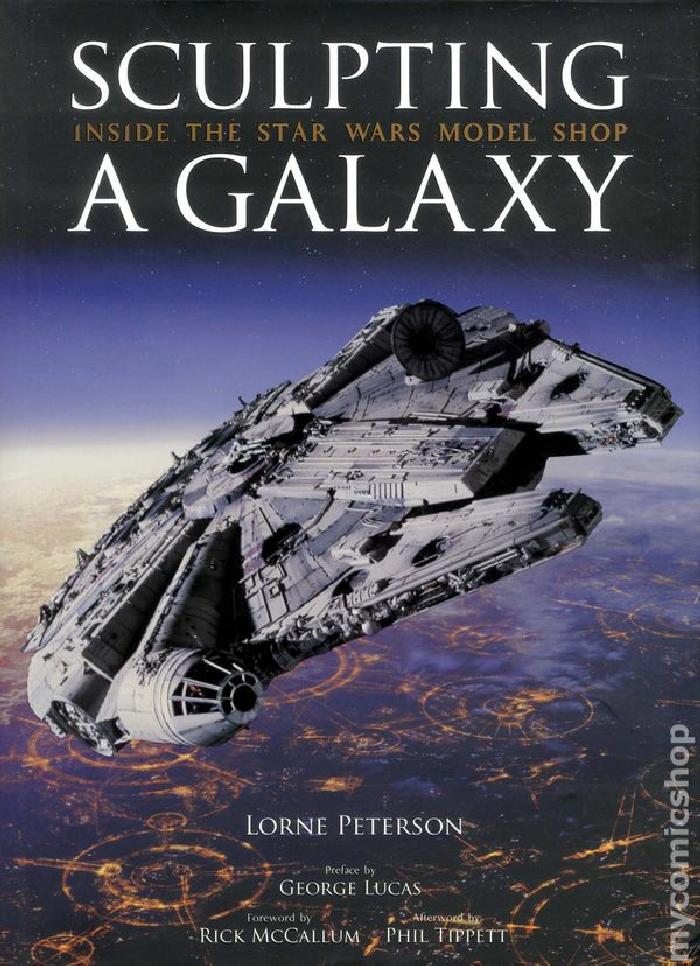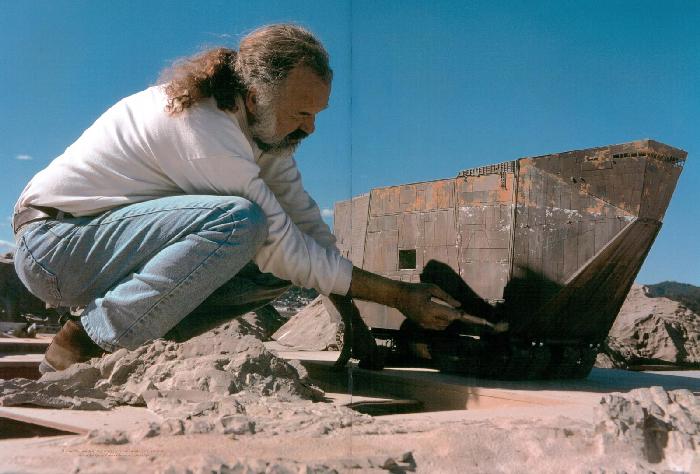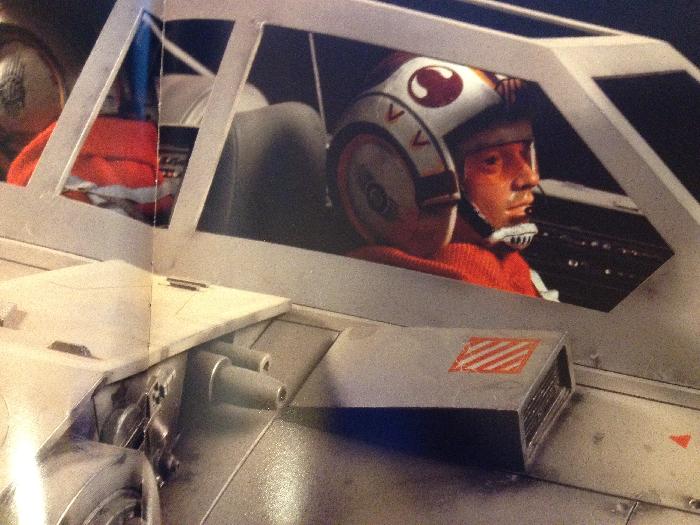Sculpting the Galaxy by Lorne Peterson (2006)

There’s something about physical miniature models that CGI, at least currently, cannot seem to capture. There’s no doubt that computer graphics have opened up new world (both figuratively and literally) to filmmakers, but the way a physical model photographs on screen just has a feel to it that computers can’t always seem to duplicate.
In Sculpting the Galaxy, physical models are the stars. With a preface by George Lucas, a foreward by Rick McCallum and an afterward by Phil Tippett there’s plenty to read here, but the focus of this book are the models themselves. While browsing through my local Half Price Books I spotted this book and randomly flipped it open to this picture:

Sold.
The book is divided into four chapters that serve as categories: Starships, Vehicles, Droids and Creatures, and Environments. Each section contains dozens of models and is roughly chronological as it moves from the original films to the prequels. Whether you were hoping to see detailed pictures of original TIE Fighters or details from Queen Amidala’s palace, you’ll find them here.
Huge advances in technology were made between the time the two trilogies, so while the original trilogy is represented solidly by an army of models, most of the prequels are represented by models that were later scanned and turned into three-dimensional computer models. It will always be more interesting to me to see the actual figures used in the hologram chess game on the Millennium Falcon as opposed to a carving of Watto that was eventually digitized into a CGI character.
The text accompanying the pictures is informative. Much of it is common knowledge to fans of the films, but even I picked up a few new nuggets of trivia along the way. I did not know that the original Death Star model was accidentally thrown away after filming, for example. Another thing I did not realize was just how many of the sets that appeared in the films were actually miniatures. Even a CGI podracer apparently looks better on screen when filmed against a physical set, even if the set is tiny.
My only real complaint about this book is that occasionally the text is difficult to read. On many pages, the headlines and captions are printed in a bronze, almost dark brown color on a black background. On other pages, white text appears on black, starry backdrops. More than half of the pages contain small, white text on black backgrounds. If you’re old enough to remember seeing the original trilogy in theaters a long, long time ago, forget your trusty blaster and bring your reading glasses to this battle instead.

Between Star Wars in Concert, Star Wars: Where Science Meets Imagination, and a few trips to museums, I’ve seen authentic Star Wars models half a dozen times. Unfortunately due to age they’re always behind glass. Sculpting the Galaxy is a great way to see them up close and marvel at the details that went into making ships we’ve been in love with for 30 years now.
November 12th, 2013 at 11:13 am
I’m sure you’ve heard the theory of “the uncanny valley”. I believe it applies as much to CGI as robotics. Thus models and miniatures are always going to look better to people, no matter how sophisticated rendering techniques become.
This looks like a very cool book, but it’s bugging me a little that the cover depicts the Millennium Falcon model over the CGI planet-scape of Coruscant. But maybe that was intentional…
I suppose it’s too much to hope that George Lucas proffers any mea culpas for his CGI binging in the preface?